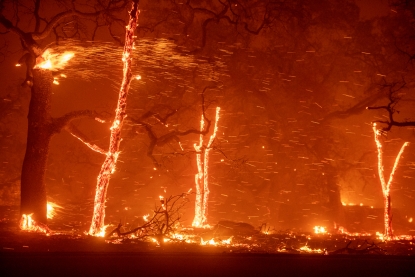
Introduction
In November 2018, the town of Paradise, California, was devastated by the Camp Fire, the deadliest and most destructive wildfire in California’s history. With a loss of over 18,000 structures and 85 lives, the impact on the community was profound. This tragic event not only highlighted the vulnerabilities of communities living in fire-prone areas but also sparked a renewed focus on wildfire preparedness and recovery. As California faces increasing occurrences of wildfires due to climate change, the story of Paradise serves as a crucial reminder of the resilience of affected communities and the importance of proactive measures to mitigate future disasters.
The Camp Fire: A Catastrophic Event
The Camp Fire ignited on November 8, 2018, in the Sierra Nevada foothills and rapidly spread, fueled by dry conditions and high winds. In just over two weeks, the fire consumed approximately 153,000 acres, obliterating the town of Paradise with little warning. Eyewitness accounts described scenes of chaos as residents evacuated, unsure if they would return to anything. The destruction forced thousands into temporary shelters, while the town itself became a stark symbol of vulnerability amid natural disasters.
Recovery Efforts and Community Resilience
Since the fire, a significant recovery effort has unfolded in Paradise. Local government, non-profit organizations, and community members have banded together to rebuild homes, offer support services, and restore the town’s spirit. The Paradise Rebuild Project was initiated to streamline the rebuilding process, reducing bureaucratic hurdles for homeowners. Financial aid and housing assistance programs have also been established to alleviate the challenges faced by those impacted.
Despite the ongoing difficulties, the town’s residents have shown remarkable resilience. Community events, such as memorials and local festivals, have played a vital role in uniting the populace and fostering hope. Furthermore, California’s state and federal governments have allocated funds to improve infrastructure and enhance fire prevention protocols, seeking to protect both residents and the environment from future wildfires.
Future Considerations
As Paradise continues its recovery journey, the events surrounding the Camp Fire have prompted broader conversations about wildfire management and urban planning in fire-prone areas. Experts emphasize the need for better forest management practices, improved building codes, and increased public awareness about fire safety. Residents and policymakers alike recognize that adapting to new climate realities is essential to safeguarding communities vulnerable to similar disasters in the future.
Conclusion
The fire that ravaged Paradise, California, serves as a poignant reminder of the destructive capacity of wildfires and the urgent need for comprehensive strategies to prevent them. As recovery efforts progress, the resilience shown by the people of Paradise reflects a collective hope that the community will not only rebuild but emerge stronger. The lessons learned from this tragic event will likely inform governmental and architectural responses to future wildfires, ultimately shaping a safer and more prepared California.



